Do you need help with the complexity and sheer code volume required for your projects? You’re not alone!
Many developers face this issue daily, which can be a significant hurdle to progress.
That’s why we’re excited to introduce you to the AI-powered code simplifier.
A code simplifier, particularly AI-powered, is an advanced tool that leverages artificial intelligence and machine learning algorithms to analyze and optimize existing code.
The primary function of this tool is to take complex or convoluted code segments and transform them into more streamlined, efficient, and readable versions.
In this article, we’ll explore how it works, its benefits, and how you can use it in your development process today.
So, put down that complicated code and get ready to simplify your workload with the help of AI.
Let’s dive in!
Overview of Code Simplifiers

In the ever-evolving software development landscape, Code Simplifiers have emerged as indispensable tools that revolutionize how developers write, optimize, and maintain their code.
These innovative solutions simplify the complex world of coding by automating various tasks, such as code analysis, refactoring, and optimization.
With the integration of artificial intelligence (AI), Code Simplifiers have reached new heights of efficiency and effectiveness, making them essential for modern developers.
Let’s take a look at the top advantages.
Top 5 Advantages of Using AI for Code Simplification:
Advanced Code Analysis: AI-powered code simplifiers identify redundancies, inefficiencies, and potential issues.
Automated Refactoring: AI coding Tools apply best practices, coding standards, and design patterns for maintainability.
Readability Enhancement: AI transforms verbose, convoluted code into concise, well-structured code.
Productivity Boost: AI automates tasks, allowing developers to focus on innovative features.
Continuous Improvement: AI models evolve to maintain efficiency and adhere to industry standards.
In the upcoming sections, we will delve deeper into how AI-powered Code Simplifiers can simplify your development workflow.
So, whether you’re working on individual projects or collaborating with a team, let’s optimize your code!
How to Use An AI-Powered Code Optimizer: Top 4 Examples
For these examples, we’ll be using the Enterprise DNA Data Mentor, it’s super effective and free to try.
Don’t worry, this code optimizer will help simplify your code in a matter of seconds!
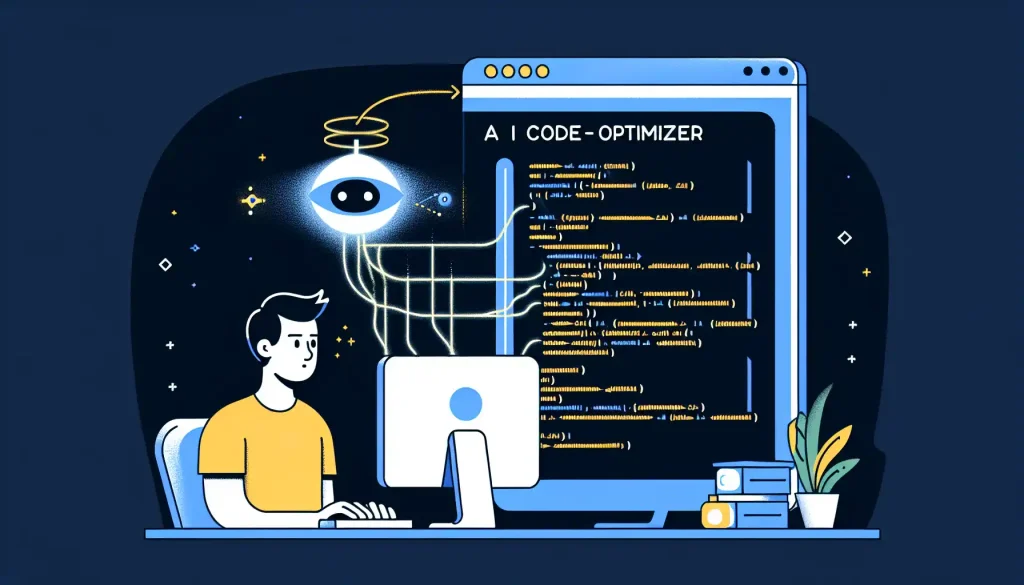
We’ll demonstrate the capabilities of the AI-powered Code Optimizer with examples in different programming languages.
Firstly let’s start with Java.
Example 1: Simplifying Java Code
Unoptimized Java Function:
public int sumArray(int[] arr) {
int sum = 0;
for (int i = 0; i < arr.length; i++) {
sum += arr[i];
}
return sum;
}Optimized Java Function:
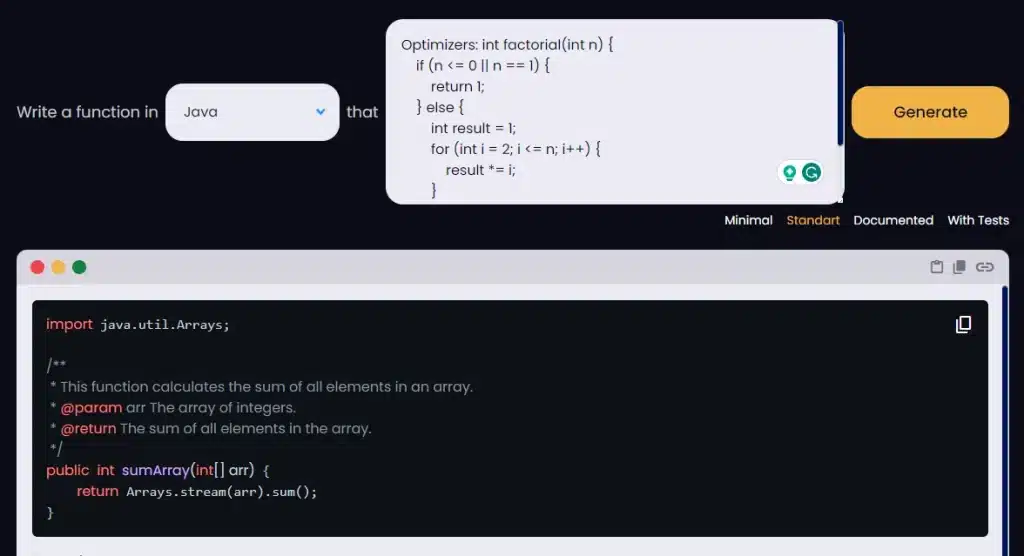
The Code Optimizer simplifies the code by utilizing Java’s Stream API, making it more concise and performant.
Example 2: Simplifying C Code
Unoptimized C Function:
int factorial(int n) {
if (n <= 0 || n == 1) {
return 1;
} else {
int result = 1;
for (int i = 2; i <= n; i++) {
result *= i;
}
return result;
}
}Optimized C Function:
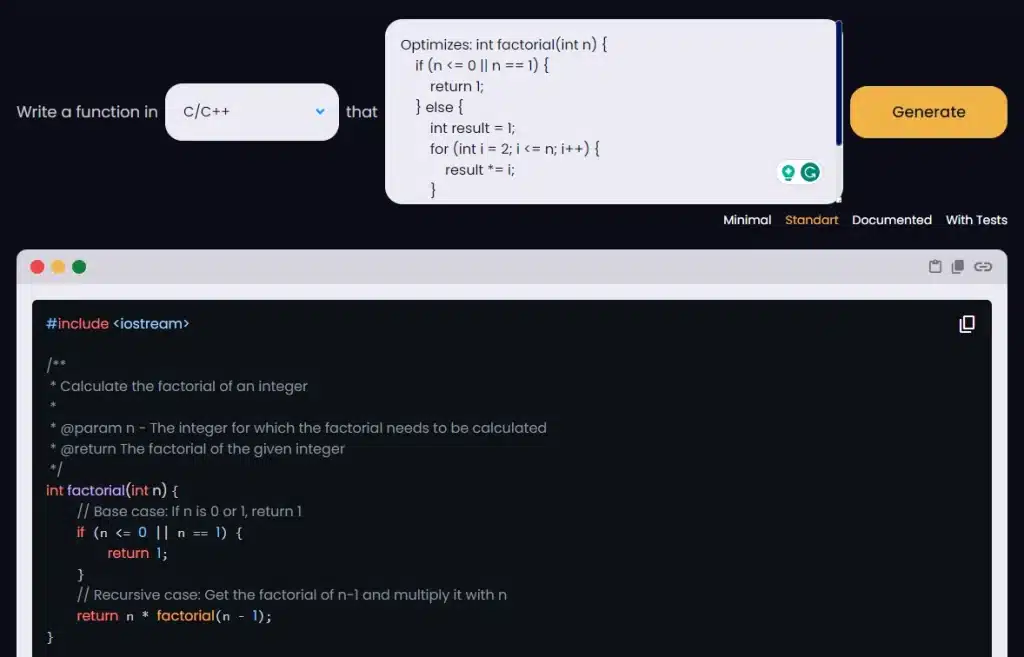
The Code Optimizer transforms the iterative factorial calculation into a recursive one, which can be more elegant and efficient for small n values.
Example 3: Simplifying JavaScript Code
Unoptimized JavaScript Function:
function findMax(arr) {
let max = arr[0];
for (let i = 1; i < arr.length; i++) {
if (arr[i] > max) {
max = arr[i];
}
}
return max;
}Optimized JavaScript Function:
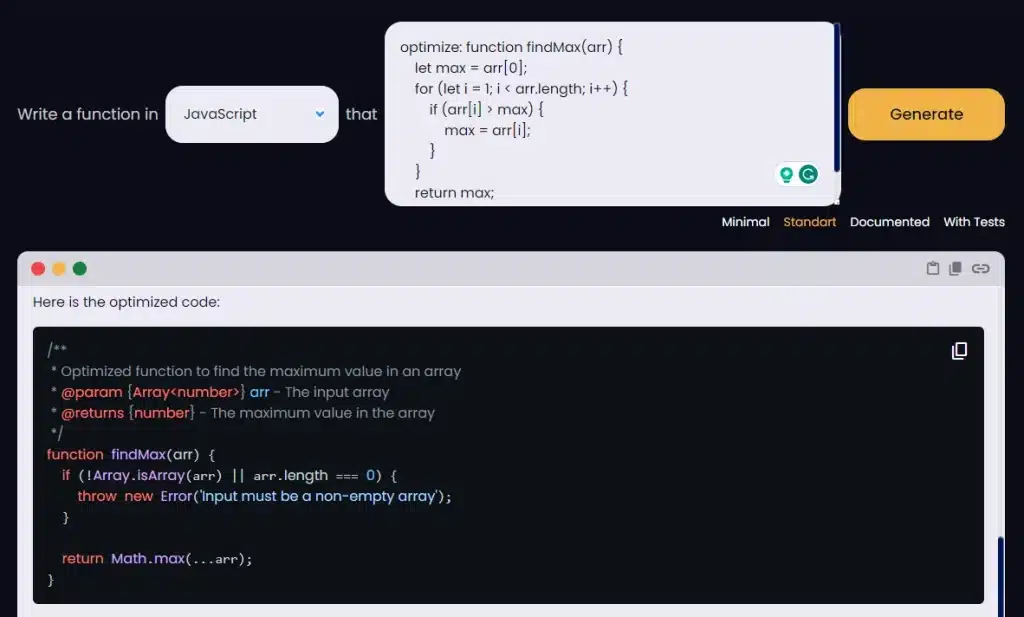
The Code Optimizer leverages JavaScript’s built-in Math.max() function to simplify the code for finding the maximum element in an array.
Example 4: Simplifying Python Code
Unoptimized Python Function:
def is_prime(n):
if n <= 1:
return False
for i in range(2, n):
if n % i == 0:
return False
return TrueOptimized Python Function:
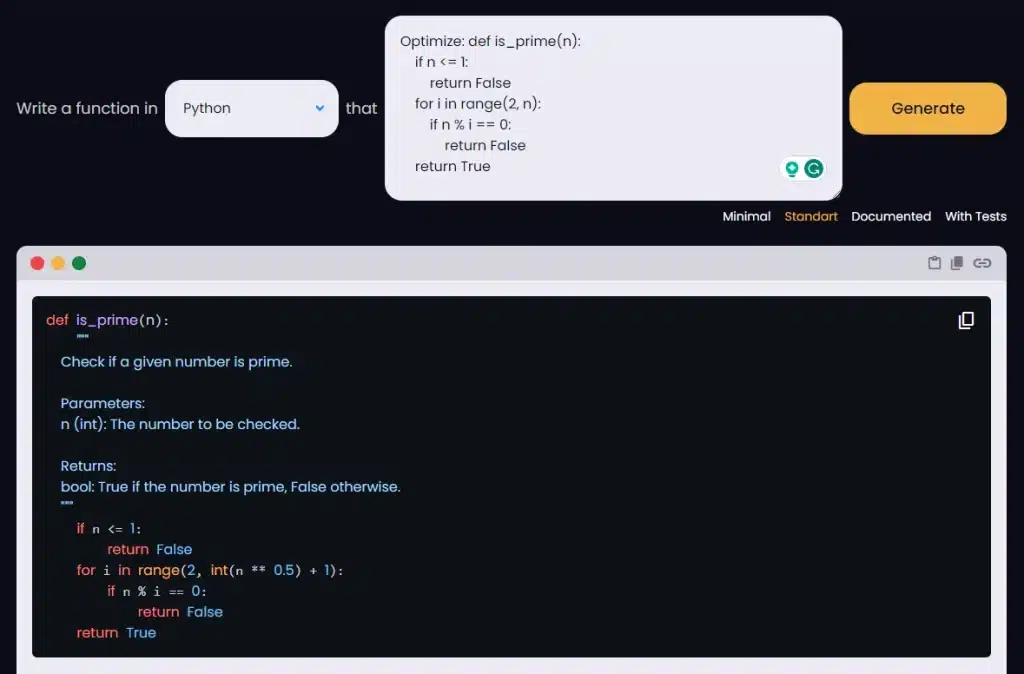
The Code Optimizer enhances the Python prime-checking function by implementing the optimized version.
These examples demonstrate the Code Optimizer’s ability to transform unoptimized code into more efficient and readable versions across various programming languages, improving code quality and performance.
Next, let’s compare AI-powered refactoring with more traditional methods.
Comparison of AI-Powered Refactoring with Traditional Methods

Time Efficiency
Traditional refactoring can take days or weeks, depending on the complexity and experience of the developer, whereas AI-driven tools can complete tasks in hours that would typically take days.
This rapid turnaround is crucial for fast-paced development environments.
Accuracy and Consistency
The quality of traditional refactoring relies heavily on the developer’s expertise, leading to inconsistent code quality and style. AI tools, like Data Mentor, on the other hand, apply a consistent set of rules and best practices, ensuring uniform standards across projects.
Handling Complexity
Developers often struggle with simplifying complex code, especially in legacy systems. AI-powered tools excel at deconstructing and simplifying complex structures, making them more understandable and maintainable.
Limitations of Manual Refactoring
Manual refactoring is prone to human error, which can lead to overlooked bugs or new issues. AI tools reduce this risk by following strict algorithmic guidelines and best practices in coding.
Resource Intensiveness: Manual refactoring is resource-intensive, requiring time and effort to be better utilized for innovation and problem-solving. AI tools automate the process, freeing your valuable resources for more strategic tasks.
Technological Advancements in AI Tools
Learning and Adaptation: AI-powered code simplifiers have advanced to learn from previous experiences and adapt to new coding scenarios, becoming more efficient, accurate, and effective over time.
Embracing AI tools for code simplification allows developers to work alongside intelligent assistants to streamline the development process and ensure consistent, high-quality code.
Let’s wrap this up by considering some of our main points.
Final Thoughts

Now you know that AI-driven Code Simplifiers are game changers in software development. They boost code quality, readability, and maintainability.
Also, these tools go beyond traditional coding practices, delivering unparalleled efficiency and precision.
Illustrated across various programming languages, they streamline development and enhance code performance—developers, whether solo or in teams, must integrate AI-powered Code Simplifiers for future-proofing.
Furthermore, these tools adapt to evolving programming landscapes, saving time and enabling creative problem-solving.
Also, they signify a paradigm shift in software development, fostering efficient, robust, and maintainable codebases in our digital era.
So go ahead and start simplifying your code today!
Learn to transform and code addresses in Python with this straightforward tutorial on the enterprise DNA YouTube channel:
Frequently Asked Questions
What is a code simplification tool?
A code simplification tool is a software application powered by artificial intelligence that analyzes, optimizes, and refactors code to make it more efficient, readable, and maintainable.
How can I write code using a code simplification tool?
Code simplification tools do not write code from scratch. Instead, they analyze and improve existing code that you provide as input.
Can a code simplification tool help identify duplicate code?
Yes, code simplification tools can identify and eliminate duplicate code segments, promoting code reusability and reducing redundancy.
Is it compatible with Visual Studio?
Many code simplification tools can be integrated with Visual Studio, enhancing the coding experience within the popular development environment.
How does it provide a fast and efficient way to improve my coding experience?
Code simplification tools automate code analysis and refactoring, saving time and effort and improving the overall coding experience.
What is the significance of clean code in software development?
Clean code is easy to read, maintain, and understand. Code simplification tools aim to transform complex and convoluted code into clean, well-structured code.
Are there various tools available for code simplification?
Multiple code simplification tools are available, each with unique features and capabilities. Users can choose the one that best suits their needs.
Can code simplification tools assist with unit tests?
Some code simplification tools can help optimize unit tests by improving code quality and reducing redundancy.
What makes code simplification tools great tools for developers?
Code simplification tools enhance productivity, code quality, and collaboration among development teams, making them invaluable tools for developers.
Are there more features beyond code simplification?
Yes, code simplification tools may offer additional features such as code generation, debugging assistance, and real-time testing capabilities.
How can using a code simplifier save me time?
By automating code analysis and refactoring, these tools can significantly reduce the time spent on routine coding tasks, allowing developers to focus on more critical aspects of their projects.
Can code simplification tools help with list comprehensions?
Yes, code simplification tools can optimize code, including list comprehensions, to make it more efficient and readable.












